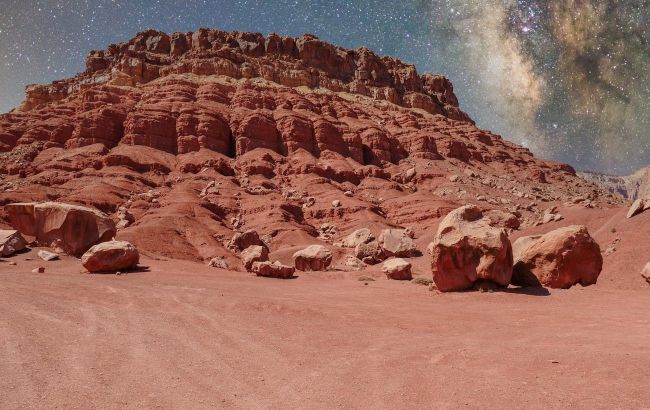Life on Mars: Rover detects unique samples in ancient lake
 NASA Mars rover discovers unique life specimens on Mars (photo: Pexels)
NASA Mars rover discovers unique life specimens on Mars (photo: Pexels)
Celebrating its one-thousandth Martian day, the NASA Perseverance rover has concluded its exploration of an ancient river delta in the Jezero Crater. It has uncovered signs of the existence of a massive lake that existed here hundreds of millions of years ago, writes Phys.org.
Collected samples
The rover has collected a total of 23 samples, each the size of a school chalk. These specimens have provided scientists with new insights into the geological history of this part of the Red Planet. Two of them, in particular, have sparked significant interest, to the extent that they have been given names – Lefroy Bay and Otis Peak.
Lefroy Bay contains a significant amount of fine-grained silica, which on Earth plays a role in preserving ancient fossils.
Otis Peak is of special interest as it contains a large amount of phosphates, often associated with conditions supporting life as we know it. Both samples also have a rich carbonate content, preserving data about the surrounding environment since their formation.
How the lake was discovered
"We picked Jezero Crater as a landing site because orbital imagery showed a delta - clear evidence that a large lake once filled the crater. A lake is a potentially habitable environment, and delta rocks are a great environment for entombing signs of ancient life as fossils in the geologic record," said Perseverance's project scientist, Ken Farley of Caltech.

Carbonates formed in aquatic environments are highlighted in green (Photo: Phys.org)
Additionally, after thorough research, the Perseverance team has compiled the history of the crater, depicting the phases of the lake and river's development from beginning to end on a timeline.
According to scientists, the Jezero Crater formed as a result of an asteroid impact approximately 4 billion years ago. It took hundreds of millions of years for water to fill it. It is estimated that the lake's width was approximately 35 kilometers, with a maximum depth reaching 30 meters.
Also, read about the reasons for the delay in human Moon landings.
We also showed unique images of Mars and its moon from an unusual perspective, as revealed by NASA.

